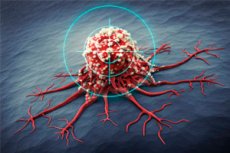Evolutionary therapy: a new cancer treatment strategy using mathematical modeling
最近審查:14.06.2024

Cancer presents significant challenges due to the development of resistance and the likelihood of relapse. Resistance can occur due to permanent genetic changes in cancer cells or nongenetic changes in cancer cell behavior caused by treatment. Standard cancer treatment usually involves using the maximum tolerated dose of a drug to effectively kill drug-sensitive cells. However, this approach often fails in the long term because drug-resistant cancer cells can grow faster when all drug-sensitive cells are destroyed.
An evolutionary treatment approach called adaptive therapy personalizes treatment dosage or breaks based on the patient's individual responses. The goal of adaptive therapy is to maintain sufficient numbers of sensitive cells to control the growth of resistant cells. Recent studies and clinical trials have shown that adaptive therapy can delay the development of resistance more effectively than standard treatment.
Determining dosage and treatment intervals for each patient is challenging because cancer is a complex, evolving system and each patient is unique. Mathematical models can help develop such individualized treatment strategies. In fact, several mathematical models have been developed to study the impact of different treatment strategies on patient outcomes. However, existing mathematical models often ignore the influence of acquired resistance and plasticity of cancer cells. 'Acquired resistance' covers various types of resistance that arise, often due to genetic changes. 'Cell plasticity' refers to the ability of cancer cells to change their phenotypes in response to changes in their microenvironment, such as fluctuations in treatment dosage or discontinuation of treatment.
A research team led by Dr. Yunjung Kim from the Natural Products Informatics Research Center at the Korea Institute of Science and Technology (KIST, director Oh Sangrok) has developed a theoretical framework for cancer treatment strategies that takes into account tumor evolution. They developed a mathematical model to predict tumor evolution, taking into account the acquisition of resistance by cancer cells and their ability to change phenotypic behavior (plasticity) during treatment. Analysis of their model revealed the conditions for the existence of an effective dosing window, a range of doses that can maintain tumor volume at an equilibrium point where tumor volume remains constant and stable.
For some tumors with plasticity, breaks in treatment help cancer cells become responsive again by teaming up with other sensitive cells to suppress the growth of resistant cells. The research team proposed evolutionary dosing therapy, which involves treatment in cycles consisting of treatment breaks, minimum effective doses and maximum tolerated doses. Interruption of treatment allows the plastic cancer cells to regain sensation, after which the minimum effective dose is applied to control tumor volume. The maximum tolerated dose is then administered to further reduce tumor size. This dosing cycle effectively controls tumor volume at a manageable level. Numerical simulations of the proposed strategies applied to a melanoma patient further illustrate these findings. The results show that evolutionary dosing can redirect tumor dynamics, keeping tumor size below acceptable levels.
The developed mathematical model can predict the effective dosage range of cancer treatment candidates before clinical trials. It can help determine the anticancer effects of new treatments and identify the effective dosage range for each drug. In addition, the model facilitates the development of personalized cancer treatment strategies by taking into account the evolutionary dynamics of each patient's tumor during treatment.
Quote: “In the current study, we highlighted the role of phenotypic plasticity of cancer cells in improving the controllability of tumor burden through cyclic doses of evolutionary treatments,” said Dr. Kim Youngjung from the Natural Products Informatics Research Center at the Korea Institute of Science and Technology.
She also mentioned plans to use the mathematical model to design experimental animal studies and clinical trials of potential anticancer drugs derived from natural products, with the goal of establishing dosing regimens that effectively control tumor burden.
The study results were published in ScienceDirect.

